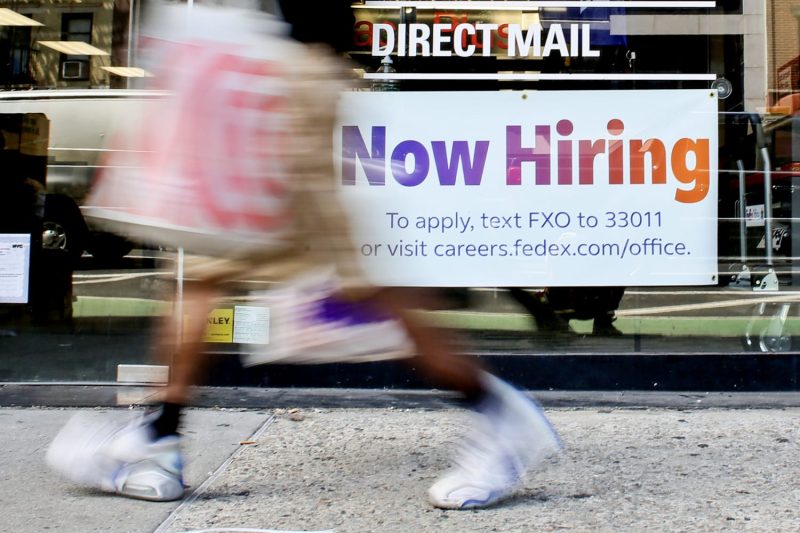
U.S. added 818,000 fewer jobs than thought, adding to concerns about a slowing economy
U.S. job gains over the 12 months ending in March were revised downward Wednesday by 818,000 — a significant revision that adds to recent concerns that the economy has been slowing.
The change means that roughly 2.1 million jobs were created in the U.S. in the past year, compared with about 2.9 million prior to the revision. The new figures do not represent job losses — merely new estimates of how many jobs were actually created during the period in question.
‘Even after these large downward revisions, the labor market looks to have been on solid footing,’ Bank of America research analysts said after the report’s release.
The data serves as additional evidence that a more significant downturn in the U.S. economy may be afoot. While the economy has grown steadily in recent quarters, often outpacing expectations, the unemployment rate recently climbed to a new post-pandemic high of 4.3% (the data revisions today do not affect measures of the unemployment rate). The share of American workers both employed and unemployed looking for new work rose to its highest level in a decade in July — even as hiring has largely ground to a halt.
In a statement, White House Chief Economic Adviser Jared Bernstein said the preliminary estimate ‘doesn’t change the fact that the jobs recovery has been and remains historically strong, delivering solid job and wage gains, strong consumer spending, and record small business creation.”
Wednesday’s update from the Bureau of Labor Statistics was the largest negative revision since 2009. Still, it was slightly less than feared by forecasters, some of whom had warned it could have been as high as 1 million. Market reaction was largely muted.
In a note to clients following Wednesday’s release, Olivia Cross, economist with Capital Economics research group, said the report means that the jobs data covered by the period were ‘softer than first thought, but not worryingly so,’ and that it will likely lead the Federal Reserve to cut its key interest rate by 0.25% in September, as most analysts expected before Wednesday’s release.
On an absolute basis, employment in professional and business services saw the largest adjustment, down 358,000 jobs compared to what was previously reported. Leisure and hospitality was next, down 150,000.
On a percentage basis, information occupations saw the biggest adjustment, a decline of 2.3%.
Each year, the Bureau of Labor Statistics uses state unemployment insurance tax records to paint a more accurate picture of the jobs market compared with its regular monthly surveys.
The BLS revisions are preliminary, and the scale of the revisions will again be adjusted next February.
This year’s revision was highly anticipated as market observers debate whether the Federal Reserve has been too slow to cut rates amid signs of a slowing economy. The Fed is expected to cut interest rates by 0.25% at its next policy-setting meeting on Sept. 18.
Bank of America’s research analysts said the report will have ‘little impact’ on expectations for Fed policy, adding that the Fed already had concerns about the labor market before the revisions.
